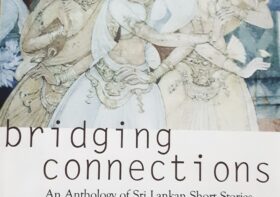The Emerging Mind – మెదడు ఎలా పని చేస్తుంది?

“The Emerging Mind” అన్నది ప్రముఖ న్యూరోసైంటిస్టు వి.ఎస్.రామచంద్రన్ 2003లో బీబీసీ రీత్ లెక్చర్ సిరీస్ లో ఇచ్చిన ప్రసంగాలను కలిపి వేసిన పుస్తకం. ఈ సిరీస్ లోనే 1996లో వచ్చిన “The Language Web” ప్రసంగాల గురించి ఇదివరలో ఇక్కడే పరిచయం చేశాను. అది రాస్తున్నప్పుడే మళ్ళీ ఈ పుస్తకం గుర్తువచ్చి – తిరిగి చదవడం మొదలుపెట్టాను. ఒకానొక చోట ఫేర్వెల్ కానుకగా వచ్చిన పుస్తకాల్లో ఇదొకటి. రెండేళ్ళ క్రితం మొదటిసారి చదివాను. అప్పట్లోనే ఒక్కో వ్యాసమూ తెగ నచ్చి రెండుమూడు సార్లు చదవడం, ప్రతి ఒక్కరి దగ్గరా చదువు చదువు అని టముకు వేయడం – అంతా అయ్యింది కానీ, పుస్తకం.నెట్లో మాత్రం ఇప్పటికి రాస్తున్నా!
ఇందులో మెదడు పనితీరు గురించిన కొన్ని పరిశోధనల గురించి వివరిస్తూ, కొన్ని మెడికల్ కేసులని తీసుకుని – కళాత్మకత ను మెదడు చూసే విధానం నుండీ – రంగులు గుర్తించలేకపోవడం దాకా అనేక అంశాల గురించి ఆసక్తికరమైన రీతిలో వివరిస్తూ పోతారు – ఐదు ప్రసంగాలలో. అలాగే, పరిణామ సిద్ధాంతం దృష్టిలోంచి మెదడునును పరిశోధించడం గురించి కూడా వివరిస్తారు – ఈ రెండే ప్రధానమైన థీంస్ వీటిలో అని రామచంద్రన్ గారే మొదటి ప్రసంగంలో చెప్పుకున్నారు కూడా. చివర్లో ఆయనే అన్న ఈ క్రింది మాటలు ఈ పుస్తకం గురించిన సారాంశం అని నేననుకుంటున్నాను –
“The main theme of our lectures so far has been the idea that the study of patients with neurological disorders has implications far beyond the confines of medical neurology, implications even for the humanities, for philosophy, maybe even for aesthetics and art. “
ఇదివరలో లాగానే – ఒక్కొక్క ప్రసంగాన్నీ తీసుకుని – కొంచెం వివరంగా వ్రాస్తాను. అయితే, గుర్తుంచుకోవలసిన విషయం: దాదాపు పదేళ్ళ నాటి విషయాలివి. ఈ రంగంలో ఇటీవలి కాలంలో జరుగుతున్న విస్తృత పరిశోధనల మధ్య బహుశా ఇందులో ఉన్న అంశాలు పాతవిగా అనిపించవచ్చు. అయితే, తక్కిన రీత్ లెక్చర్ల లాగా తేలిగ్గా అర్థమయ్యేలా ఉండడం వల్ల ఇప్పటికీ ఇవి చదివితే ఈ రంగం గురించి ఒక అవగాహన కలుగుతుంది – అని నా అభిప్రాయం. అలాగే, రామచంద్రన్ గారి రచనా శైలి లాగానే ప్రసంగ శైలి చాలా సులభ గ్రాహ్యంగా ఉంటుంది.
ఇక లెక్చర్ల వివరాల్లోకి వెళ్తే:
***
Lecture 1: Phantoms in the Brain
మెదడు పనితీరును గురించి తెలుసుకోవడానికి – రామచంద్రన్, అతనివంటివారు అనుసరించే మార్గం బయటి మనిషిగా నాకు కొత్తగా అనిపించింది మొదటిసారి విన్నప్పుడు. వీళ్ళు – ఏదన్నా ప్రమాదం వల్ల మెదడులో కొన్ని భాగాలు దెబ్బతిన్న మనుషులని తీసుకుని, వాళ్ళకి ఏ పార్టులో దెబ్బ తగిలితే ఎలాంటి ఇబ్బందులు ఎదుర్కున్నారు? (అంటే – ఫలానా ఆక్సిడెంటు తరువాత, ఒకడు మనుషుల మొహాల్ని గుర్తించలేకపోవడం వంటివి. దీన్నే Prospagnosia అంటారు) వంటివి స్టడీ చేసి, వాటి ఆధారంగా మన మెదడులో భిన్న భాగాల మధ్య ఉండే సవాలక్ష కనెక్షన్ల గురించి అర్థం చేసుకుంటారన్నమాట.
ఒక కేసులో పేషంటు ఆక్సిడెంటులో తలకి గాయం అయ్యి, కోమా నుండి తేరుకున్నాక అంతా బాగానే ఉంది కానీ వాళ్ళ అమ్మని చూసి – “ఈవిడెవరో మా అమ్మ లాగే ఉంది కానీ మా అమ్మ కాదు” అనడం మొదలుపెట్టాడట. అతని మెదడుపై పరిశోధనలు, స్కాన్లు అవీ అయ్యాక వీళ్ళు కనుగొన్న సంగతి ఏమిటంటే – మెదడులో ఫలానా ప్రాంతంలో emotional core ఉంటుందట. ఈ పేషంటుకేసులో దీనికీ, అమ్మ అని గుర్తించే ప్రాంతానికీ మధ్య కనెక్షన్ తెగిపోయిందట. దానితో, మెదడు అతని అమ్మని గుర్తించినా, ఈ emotional connection తెగిపోవడంతో, అతనిలో “అమ్మ” భావన కలగలేదన్నమాట ఆవిడని చూస్తే! (దీని పేరు Capgras Syndrome అట) ఈ లెక్చర్ లో – ఇలాంటి పరిశోధనల గురించే ఆసక్తికరమైన కథనాలు ఉన్నాయి. అలా కథలు చెబుతూనే, మెదడు పనితీరు గురించి మనకి బోలెడు విషయాలు తెలియజేస్తారు. నా మట్టుకు నాకు ఎప్పుడు చదివినా ఆశ్చర్యకరంగా అనిపించే పరిశోధనలు, ఫలితాలు ఇవి.
(ప్రసంగపాఠం ఈలంకెలో, ఆడియో ఈలంకెలో.)
Lecture 2: Synapses and the Self
రెండో అధ్యాయం – కంటిచూపుకి సంబంధించిన పరిశోధనల గురించి. మన మెదడులో visual cortex అన్న ఒకే ఒక్క visual area ఉన్నా కూడా, ముప్పై ఇతర భాగాల్లో కంటిచూపుకి సంబంధించిన వివిధ కార్యకలాపాలు జరుగుతాయి. అయితే, ఈ ముప్పై భాగాల పనితీరు గురించి, వీటి మధ్య ఉండే సంబంధాల గురించి ఎలా తెలుసుకుంటారు? మళ్ళీ ఇదివరకటి వ్యాసంలో లాగానే, మెదడుకి తగిలిన దెబ్బల తరువాత కంటి చూపులో లోపాలు ఏర్పడ్డ పేషంట్లను స్టడీ చేయడం ద్వారా. రామచంద్రన్ గారు ఏదో మామూలుగా వాకింగ్ చేస్తున్నప్పుడు కబుర్లు చెప్పుకుంటున్నట్లు న్యూరోసైన్సు గురించి చెప్పుకుంటూ పోతారు. కానీ, అందులోనే మనకి achromatopsia అనే రకం జబ్బు వల్ల ప్రపంచమంతా నలుపు-తెలుపు సినిమాలా కనబడుతుందనీ, మరొక జబ్బు ఉంటే – కదలిక ని అర్థం చేసుకోలేమని – ఇలాంటి విషయాలెన్నో తెలుస్తాయి. నాకు Blindsight అన్న సమస్య చాలా ఆసక్తికరంగా అనిపించింది. మనకి కనబడని విషయాలను కూడా చూస్తామా? అని ఆశ్చర్యంగా అనిపించింది. అయితే ఆయన తోటి శాస్త్రవేత్తలకే నమ్మశక్యం కానివి కొన్ని జబ్బులు ఉన్నాయని తెలిసాక, నా ఆశ్చర్యం గురించి నాకాట్టే ఆశ్చర్యం కలుగలేదు 

ఇవన్నీ చదువుతూ ఉంటే – “…how the activity of mere specks of jelly in the visual areas of your brain gives rise to all the richness of your conscious experience, the redness of red, your ability to recognise a burglar or your lover, and how does that happen” అంటూ రచయిత వ్యాసం మొదట్లో రాసిన మాటలు గుర్తొచ్చి, ఒక్కసారి ఒళ్ళు జలదరించింది నాకు.
“Just as little squiggles of ink, print or writing, or dots and dashes in the Morse code can symbolize or represent something even they don’t physically resemble what they are representing, similarly the action of nerve cells in your brain, the patterns of firing, represent objects and events in the external world even though they don’t in any way resemble what’s out there in the world. Neuroscientists are like cryptographers trying to crack an alien script, an alien code, in this case the code used by the nervous system to represent objects and events in the external world.”
-అన్న రచయిత వివరణ కూడా నాకు చాలా నచ్చిందీ వ్యాసంలో.
(ప్రసంగపాఠం ఈలంకెలో, ఆడియో ఈలంకెలో.)
Lecture 3: The Artful Brain
మూడవ వ్యాసం Neuroesthetics గురించి. (నాకు తెలుసు ఇది చదువుతున్న వాళ్ళలో చాలా మట్టుకు ఇక్కడికి రాగానే ఒక వ్యంగ్యపూర్వకమైన నవ్వు నవ్వుకుంటూ ఉంటారు ఈ పదం చూశాక!). ఈ ప్రసంగం మన మెదడు కళారూపాలకి ఎలా స్పందిస్తుంది? అసలు ఒక చిత్రమో, శిల్పమో ఏదో చూసినప్పుడు ఏం జరుగుతుంది? అన్న అంశాన్ని neuroscience కోణంలో చూసే ప్రయత్నం. భాషాపరిశోధకులు language universals కొన్ని అందరిలోనూ, అన్ని భాషల్లోనూ ఉంటాయని ప్రతిపాదించినట్లే, ఇక్కడ కొన్ని artistics universals ఉండొచ్చని ఒక ప్రతిపాదన చేస్తారు రచయిత. కళను అనుభవించడంలో 90శాతం మన cultural background వల్ల నైతే, మిగితా పది శాతం ఈ universals అని అంటారు. ఈ పదిశాతం గురించే ఈ neuroesthetics. ఈ క్రమంలో Ramachandran’s 10 universal laws of art అని ప్రతిపాదించి, వీటిని ఈ వ్యాసంలో వివరిస్తారు. (ఈ ప్రసంగంలో కంటే వివరంగా పైన ఇచ్చిన వికీ లంకెలో ఉంది ఈ laws గురించి. ఆసక్తిగలవారు చదువుకోగలరు.) ఈ ప్రసంగంలో కూడా మెదడులో ఒక భాగం పని చేయకపోవడం వల్ల artistic sense కోల్పోయిన వారిని, అదే విభాగం మాత్రం పనిచేస్తూ, తక్కిన భాగాలు పాడవడం వల్ల గొప్ప artistic sense చూపగలిగిన వారినీ -పరిచయం చేస్తూ, మెదడులో మన కళాపిపాస నివాసం ఎక్కడో తెలుసుకునే ప్రయత్నాలు చేస్తారు.
“The solution to the problem of aesthetics, I believe, lies in a more thorough understanding of the connections between the 30 visual centres in your brain and the emotional limbic structures. And once we have achieved a clear understanding of these connections, we will be closer to bridging the huge gulf that separates C.P.Snow’s two cultures – science on the one hand and Arts, philosophy and humanities on
the other. We could be at the dawning of a new age where specialisation becomes old-fashioned
and a new 21st century version of the Renaissance man is born.” అంటూ ముగిసిందీ వ్యాసం.
(ప్రసంగ పాఠం ఇక్కడ, ఆడియో ఇక్కడ)
Lecture 4: Purple Numbers and Sharp Cheese
ఈ అధ్యాయంలో ఫలానా అంకె చూస్తే ఫలానా రంగు లా అనిపించడం – ఇలా mingling of senses ఏర్పడే synesthesia అనే విచిత్రమైన సమస్య గురించి వివరించడం మొదలుపెట్టి, మన మెదడులో భాషకి స్థానం ఎక్కడ? అసలు భాష ఎలా పుట్టింది? అన్న ప్రశ్నల దాకా వస్తారు. ఈ synesthesia ను తీసుకుని – అక్కడ నుండీ abstract thought, metaphor వంటి అంశాల దాకా రావడం చూసి ఈ పరిశోధనా విధానంపై మరింత ఆసక్తి కలిగింది ఈ అధ్యాయం చదువుతున్నప్పుడు. తత్వవేత్తలు, భాషావేత్తలు, మనస్తత్వ శాస్త్రవేత్తలు, ఇంకా చాలామంది ఇతరులు – ఎందరో భాష ఎలా పుట్టింది? అన్న ప్రశ్నని రకరకాల కోణాల నుండి ఏళ్ళుగా వెదుకుతూనే ఉన్నారు. అయితే, ఒక బయాలజీ తెలిసిన న్యూరో సైంటిస్టు దృక్కోణంలో చదవడం ఇదే తొలిసారి కనుక, నాకు అప్పట్లో ఆసక్తికరంగా అనిపించింది. ఇప్పటికీ ఈ దృక్కోణంలో నేను చదివినది ఇదొక్కటే అనుకోండి, అది వేరే సంగతి!
“We are not angels, we are merely sophisticated apes. Yet we feel like angels trapped inside the bodies of beasts, craving transcendence and all the time trying to spread our wings and fly off, and it’s really a very odd predicament to be in, if you think about it.”
అన్న వాక్యాలతో ముగించారీ ప్రసంగాన్ని!!
(ప్రసంగ పాఠం ఇక్కడ, ఆడియో ఇక్కడ)
Lecture 5: Neuroscience – the New Philosophy
ఈ ప్రసంగంలో ప్రధాన విషయం – మానసిక సమస్యలు (mental illness). అక్కడినుండి – free will, nature of self వంటి తాత్విక విషయాల గురించి కూడా న్యూరోసైన్సు కోణంలో చర్చిస్తారు.
సంప్రదాయికంగా మానసిక సమస్యలని రెండు పద్ధతుల్లో స్టడీ చేస్తారు -ఒకటి సైకియాట్రీ అయితే, ఒకటి Freudian approach. ఇందులో రామచంద్రన్ ఈ రెండూ కానిది, ఈ రెంటినీ complement చేసేదీ అయిన మూడో రకం, తను evolutionary neuro psychiatry అని పిలిచే శాస్త్రం గురించి పరిచయం చేస్తారు. ఇదివరకటిలాగే, మెదడులోని వివిధ భాగాల పనితీరును గురించి చెబుతూనే – హిస్టీరియా నుండి స్కిజోఫ్రెనియా దాకా వివిధ మానసిక సమస్యల గురించి తనదైన శైలిలో చాలా ఆసక్తికరంగా, చక్కగా అర్థమయ్యేలా వివరించారు.
“We Neuroscientists can begin to answer some of those lofty questions that thinking people have been preoccupied with since the dawn of history. What is free will? what is body image? what is the self? who am I? – questions that until recently were the province of philosophy. No enterprise is more vital for the wellbeing and survival of the human race. This is just as true now as it was in the past. Remember that politics, colonialism, imperialism and war also originate in the human brain.” – అంటూ ఈ లెక్చర్లు ముగించారు. ఒక న్యూరోసైంటిస్టు తాత్విక సమస్యలని అన్వేషించడం కొత్తగా అనిపించవచ్చు గానీ, ఆయన మాట్లాడుతున్నది ఏమిటో ఆయనకి పూర్తిగా అవగాహన ఉందని అనిపించింది నాకు మధ్యమధ్యలో ఇచ్చిన ఉదాహరణలు అవీ చూసినప్పుడు.
(ప్రసంగ పాఠం ఇక్కడ, ఆడియో ఇక్కడ)
మామూలు మనుషుల భాషలో – “పిచ్చి” అని ఒక్కముక్కలో తేల్చేసే అంశాలను తీసుకుని (ఉదాహరణకి తల్లి పట్టుకుని తల్లి లాంటి imposter అంటే ఈ కథలన్నీ తెలియని వారు ఏమంటారండీ మరీ, పిచ్చెక్కింది అనక??) వాటి వెనుక ఎంత కథుందో, అందరికీ అర్థమయ్యేలా చెప్పడం ఈ పుస్తకం/ప్రసంగాల ప్రత్యేకత. ఈ లెక్చర్ల గురించి ఒక వెబ్సైటులో రాసిన:
“This man knows how to lecture. Just listening to the recordings is an electrifying experience, it must have been fabulous to be there. So do yourself a favour no matter what your level of knowledge in this area and have a listen.” (source here)
-అన్నది ఎంతో నిజం!
అన్నట్లు, ఈ లెక్చర్లు సామాన్యులకి మాత్రమే! ఈ రంగంలో మేధావులు వచ్చి చదివితే మొత్తం పరిశోధనలని trivialize చేసినట్లు అనిపించవచ్చు కూడా! మొదటి వ్యాసంలో ఈసిరీస్ ని పరిచయం చేస్తూ రామచంద్రన్ అన్న మాటలు మరొక్కసారి ప్రస్తావించి ఈ వ్యాసం ముగిస్తాను.
Given the enormous amount of research on the brain, all I can do is to provide a very impressionistic survey rather than try to be comprehensive. Of course by doing this, I will be oversimplifying many of the issues involved and run the risk of annoying some of my specialist colleagues. But, as Lord Reith himself once said, “There are some people whom it is one’s duty to offend!”
(ఈ లెక్చర్లు ప్రసారమౌతున్న కాలంలోనే వీటిపై వచ్చిన ఒక వ్యాసం ఇక్కడ)
****
లెక్చర్లన్నీ ఆన్లైన్ చదువుకు ఉచితంగానే లభ్యం. కానీ, కొనాలి అనుకుంటే వివరాలు:
The Emerging Mind
V.S.Ramachandran
పేజీలు: 262
ముద్రణ: 2008
వెల: 250 రూపాయలు.
Flipkart Link




Phantoms in the brain | పుస్తకం
[…] సారి ఇందులోని వ్యాసాలు చదివాను. ఈయన Reith Lectures చదివినపుడు. ఈమధ్యన Left Neglected అన్న నవల […]
ఏల్చూరి మురళీధరరావు
సౌమ్య గారికి
నమస్కారం!
రోజురోజుకీ కొత్త కొత్త పుస్తకాలను చదువుతూ అత్యంతవిశాలమైన మీ విజ్ఞానపరిధిని క్షితిజరేఖల ఆవలి అంచుకు విస్తరింపజేస్తున్న మీ అభినివేశం ఆశ్చర్యకరంగా ఉంటున్నది. “సరస్వత్యా స్తత్త్వం కవి-సహృదయాఖ్యం విజయతే” అని పెద్దలన్నారు.
మీ పరిచాయకవ్యాసం విషయగంభీరిమ వల్ల ఆసక్తిదాయకంగా ఉన్నది.
ఈ రంగంలో నాకు చాలా అభిమానపాత్రమైన రెండు రచనలు –
Aleksandr Reformatskij గారు వ్రాసిన అద్భుతావహమైన Selected Writings: philology, linguistics, semiotics (1988). అందులో సంగీతాన్ని మెదడు అర్థంచేసుకొనే తీరుతెన్నులను గుఱించి Speech And Music in Singing అన్న వ్యాసం;
I. Roset గారు వ్రాసిన The Psychology of Phantasy: An Experimental and Theoretical Investigation into the Intrinsic Laws of Productive Mentality (1977) లో The Hypothesis of recognising Creative Ideas అన్న వ్యాసం; అందులోనే, రంగులను మెదడు అర్థంచేసుకొనే తీరుతెన్నులు, రంగులకు గల సాంకేతికతను గుఱించిన వ్యాసాలు.
ఈ పరిచయ వ్యాసపరంపరకు, మంచి లంకెలను కూర్చినందుకు మీకు అభినందనలు.
సప్రశ్రయంగా,
ఏల్చూరి మురళీధరరావు
Srinivas Vuruputuri
Sowmya
Thanks for this nice post. I listened to these lectures a few months ago. Listening to them was a wonderful experience. Especially, the questions and answers that followed each lecture.
I was planning to buy this book or the other one titled ”Tell tale Brain’. My question to you: does this book (The Emerging Mind) – include any more additional information that is not covered by the lectures?
Please let me know.
Regards
Srinivas
సౌమ్య
Srinivas garu:
My copy of the book is with someone else at the moment. But as far as I remember, it contained only these lectures followed by a glossary. Ramachandran’s “Phantoms in the Brain” contains most of this content anyway. I did not read “Tell tale Brain” yet. But, if I have to choose to buy either “emerging mind” or “tell tale brain”, I would rather buy the latter, since its more recent and its obviously bulkier and has more information